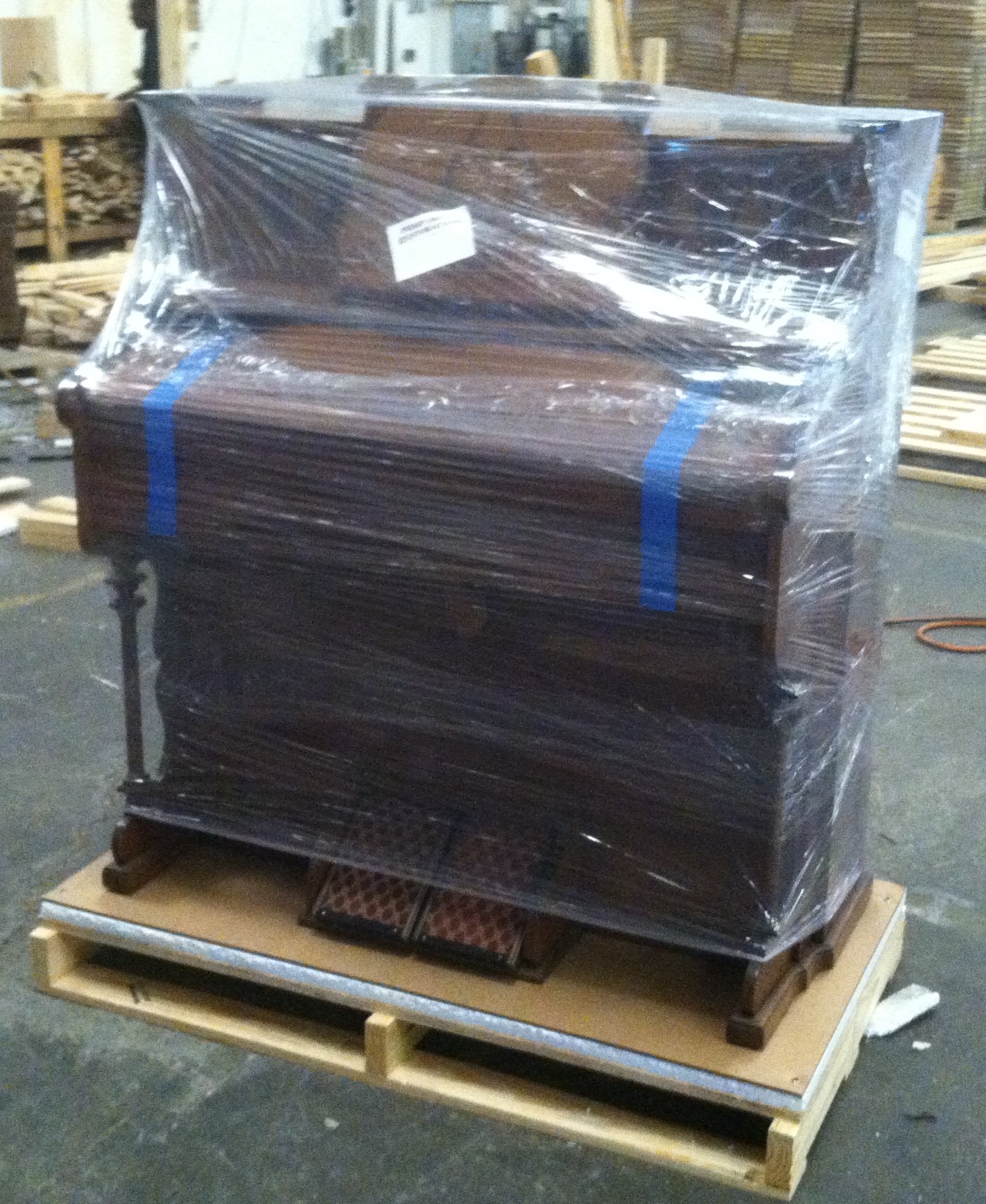|
Antique Organs |
Antique Organs |
The name "Melodeon" was originated by Jeramiah Carhart of Poughkeepsie, New York, in 1835.Written by: Arthur H. Sanders For over ten years he had worked with harmoniums and other reed organs of the day to develop an instrument with a softer, sweeter sound. The product he finally put on the market he called a melodeon: the sound was mellow, and a melody could be played upon it. Most other small foot-pump organs were meant for voice accompaniment, and were not really very pleasing to listen to as solo instruments. Carhart's Melodeon was a wonderful instrument to play. His invention is somewhat complicated, but its main feature was the use of vacuum to sound the reeds rather than air pressure, common in the English and early American organs and harmoniums. With air pressure the reeds sounded into the open air; the sound was harsh, loud, and often seemed out of tune. With vacuum, the reeds "spoke" into the case; the sounds were muffled and quite mellow. The first Carhart Melodeons were housed in simple spindle-legged cases, usually of pine. In 1846, Carhart sold his patent rights and other secrets to several manufacturers, among them George A. Prince of Buffalo, New York, The Prince factory was originally at 87 Fulton Street, with a retail store at 200 Main Street. Prince Melodeons proved popular, and the busi= ness soon outgrew the early factory. A new one was erected on the northern end of the block bounded by Niagara, Seventh, and Maryland Streets. The retail store was closed, and both manufacturing and selling were done at the factory. The new factory employed over 200 workers, and in the 1860s was acknowledged the largest and finest melodeon factory in the world. The lower floor contained the machinery for the rough wood work-two saws, two planers and lathes-and various other heavy machinery for making castings for the iron parts. On the second floor were the sales offices and wood finishing rooms; on the third, the actions were fabricated. The majority of the cases were of pine, covered with a paper-thin veneer of fine rosewood, which was carefully finished and polished with pumice-stone, and given a final polish with the naked hand. Prince manufactured some 40 models: single reeds or double reeds; carved, lyre-shaped, or straight legs; small instruments with 49 keys or large instruments with double keyboards. Between 1847 and 1866, the main period of this company, some 40,000 melodeons were made. They were sold in all parts of the United States and exported to many foreign countries. Prices varied from $52 for the small straight leg model in plain oak to over $300 for an elaborate double reed instrument. Research into the manufacture of melodeons points up the rather unusual fact that many manufacturers either took on another partner, or changed partners, every two or three years, these changes being duly recorded in notarized documents. Changes in ownership meant a change in factory name. Therefore, if we can find the name on a melodeon, we can tell, usually within five years, its date of manufacture. We give one illustration: David Whitaker and William Frisbie began the manufacture of melodeons under Carhart's patents in 1847, in New Haven, Connecticut. These were four octave instruments with little round legs. The name on them was Whitaker and Frisbie. In 1852, Whitaker sold his share in the business to a Mr. Goodman; the name was changed to Goodman and Frisbie. In 1853, Frisbie sold out to a Mr. Baldwin; the name became Goodman and Baldwin. In 1856, John L. Treat and Nelson Linsley bought the Goodman and Baldwin business and operated under the name of Treat & Linsley. In 1863, a Mr. Davis of Worcester, Massachusetts, purchased Mr. Linsley's interest and the name changed to Treat & Davis. Davis was dissatisfied and, after a fire in the factory in 1864, Linsley replaced him. This time the name became Treat c Linsley & Co. In 1865, Bernard Shoninger purchased the factory and business to add to his own business, B. Shoninger Company, which began in 1850 when Shoninger started making melodeons in a small way in Woodbridge, Connecticut. He moved to larger quarters on Kimberly Avenue in New Haven, in 1863, and then purchased the Treat & Linsley & Co. factory in 1865. Below: Eldridge Melodeon, made in Cherry Valley, N. Y, about 1849. This firm was in business only one year; changing to Amos L. Swan Organ Works in 1850. Legs are somewhat thicker than most, due probably to the weak pine used. |
Click Here & Email Me Your Questions
Learn more about the Customer's Restoration Photo Album CD!
(click picture to view)
See my crate building process for shipping restored organs

KI4LUK
Pump Organ Restorations
Rod Fudge, Owner and Technician
www.pumporganrestorations.com
All content Copyright © 2009-2023 Pump Organ Restorations · All Rights Reserved · Site Map
Hosted by Bluehost

